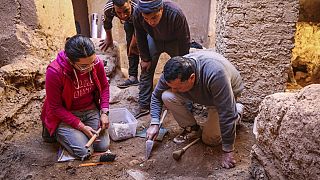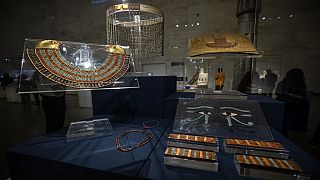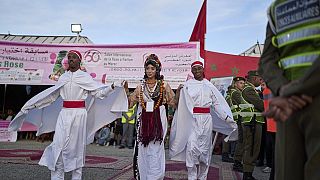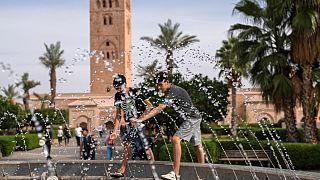Morocco
The Bizmoun necklace is the oldest piece of jewellery in the world.
It’s on display at the National Finery Museum in Rabat, Morocco, a building which has reopened its doors after years of renovations.
The necklace, made of 32 perforated shells, was found in 2019 in the Bizmoun cave near Essaouira.
“The oldest piece displayed here is the Bizmoun necklace, which is the oldest jewellery in the world, not only in Morocco, and it dates back 150,000 years. It was discovered in recent excavations in the Bizmoun cave near Essaouira. Thanks to it, we can start the investigative path and learn about the development of historical jewellery,” says Fatima Zahra Khlifi, curator, National Finery Museum.
The museum has artistic, cultural, and also historical value.
Before hosting exhibitions, it was a princely residence in the 17th century.
The building has been a museum since 1915, and it was called Oudaya museum until 2006.
The renovation works started in early 2020 and ended in late 2022.
Now called National Finery Museum, the building was inaugurated in early January.
After it opened, Morocco’s King Mohammed VI gifted 350 items from his collection to the museum.
“The goal of the restoration and rehabilitation of the building was to meet all the appropriate standards for the approval of the museum displays and receive offers, both at the national and international levels, while respecting the characteristics of the building. Then, there were workshops through which the selection, inventory and maintenance of the contents took place in order to enrich these exhibitions, without forgetting King Mohamed VI’s gift that he made available to us,” says Zahra Khlifi.
In total, 8,000 objects are on display in the museum, from jewellery to costumes, bags, belts and shoes.
“The museum contains different and diverse jewellery in its global concept, and it does not only include jewellery that was used for decoration, but there is also clothing, men’s jewellery, in a varied exhibition divided into five parts through which we can learn about the history of jewellery, the tools of jewellery-making and their development, the history of Moroccan costumes and the most important locations where they were made, as well as men’s and women’s urban and rural jewellery and their regional characteristics,” says Zahra Khlifi.
Since its reopening, the museum has welcomed more than 11,000 daily visitors.
“I see that the place is really representing Moroccan art, especially metallurgy and Caftan. It’s a nice place and interesting place to visit for people who want to know about the Moroccan heritage,” says Hassan Belfakir, visitor.
Rabat residents are also proud of this place and have noticed the facelift.
“This museum has made a great addition to the city of Rabat and has changed a lot,” says Abdelfattah El Aoufir, visitor.
According to Mohamed Es-Semmar, historian, the National Finery museum will play its part in preserving the Moroccan cultural heritage.
“We cannot understand the tangible heritage without adding to it the intangible heritage that is displayed in museums, and the added value that museums provide is that it complements what the Moroccan people in general do and Rabat in particular, or example, with regards to the city’s museums,” he says.
“It also gives the tourist who is interested in cultural tourism a general idea of the daily life of those past centuries.”












02:19
"No Sign of Weakness": Burna Boy to release new album
02:20
Young designers grace the runway at Fashion Finest Africa’s show in Lagos
Go to video
Angélique Kidjo makes history as first black African artist on Hollywood Walk of Fame
Go to video
Moroccan museums open doors for free to inspire youth pride and cultural connection
Go to video
Women redefine Gnaoua at Essaouira Festival
02:18
Netherlands returns 119 artifacts looted from Nigeria